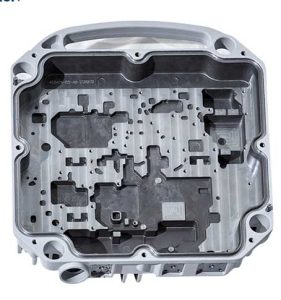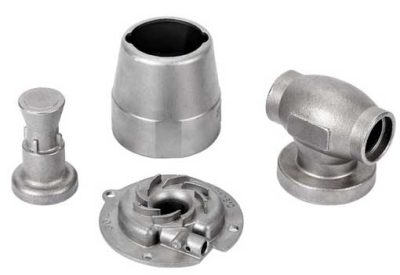produktkategori
Produkttaggar
Pressgjuten aluminium, Koppar, Delar av rostfritt stål
Pressgjutning är en pressgjutningsdel: Använda tryckgjutningsmaskinen med gjutformen installerad, metallen som koppar, zink, aluminium, rostfritt stål eller aluminiumlegering uppvärmd till flytande tillstånd hälls i gjutformen på pressgjutningsmaskinen för pressgjutning. Gjut koppar, zink, delar av aluminium eller aluminiumlegering av formen och storleken som begränsas av formen, sådana delar kallas ofta pressgjutningsdelar. Pressgjutna delar kallas olika på olika ställen: såsom pressgjutna delar, pressgjutning av aluminium, pressgjutna zinkdelar, pressgjutna koppardelar, pressgjutna delar av aluminiumlegering, etc.
Pressgjutning är en pressgjutningsdel: Använda tryckgjutningsmaskinen med gjutformen installerad, metallen som koppar, zink, aluminium, rostfritt stål eller aluminiumlegering uppvärmd till flytande tillstånd hälls i gjutformen på pressgjutningsmaskinen för pressgjutning. Gjut koppar, zink, delar av aluminium eller aluminiumlegering av formen och storleken som begränsas av formen, sådana delar kallas ofta pressgjutningsdelar. Pressgjutna delar kallas olika på olika ställen: såsom pressgjutna delar, pressgjutning av aluminium, pressgjutna zinkdelar, pressgjutna koppardelar, pressgjutna delar av aluminiumlegering, etc.
Characteristics of Die Castings
Because the metal copper, zink, aluminum and aluminum alloy have good fluidity and plasticity, and the casting process is cast in a pressure die-casting machine. Därför, aluminum die castings can be made into various complex shapes, as well as cast products with higher precision and smoothness. Thereby, the machining amount of the casting and the casting allowance of metal copper, zink, aluminum or aluminum alloy are greatly reduced. It not only saves electricity and metal materials, but also greatly saves labor costs; Koppar, zink, aluminum and aluminum alloys have excellent thermal conductivity, small specific gravity and high machinability; Som ett resultat, die castings are widely used in: Automobile manufacturing, internal combustion engine production, motorcycle manufacturing, motor manufacturing, oil pump manufacturing, transmission machinery manufacturing, precision instruments, landscaping, electric power construction, architectural decoration and other industries.
quality of die castings
The control of the surface temperature of the die-casting mold is very important for the production of high-quality die-casting parts. Uneven or inappropriate mold temperatures can also lead to dimensionally unstable castings. During the production process, the castings are pulled out and deformed, resulting in defects such as thermal pressure, mold sticking, surface depressions, internal shrinkage cavities and thermal bubbles. When the temperature difference of the mold is large, the variables in the production cycle, such as filling time, kyltid och sprutningstid, har olika grad av inflytande.
Vanliga frågor om formgjutning
Pressgjutningsdelen är inte formad och hålrummet är inte fullt
orsak:
1. Temperaturen på pressgjutformen är för låg;
2. Temperaturen på den smälta metallen är låg;
3. Pressens tryck är för litet;
4. Metallvätskan är otillräcklig; insprutningshastigheten är för hög;
5, luften kan inte släppas ut.
Justeringsmetod: 1- 2. Öka temperaturen på formgjutningsform och smält metall;
3. Byt ut högtrycksgjutningsmaskinen;
4. Tillsätt tillräckligt med smält metall för att minska insprutningshastigheten och öka tjockleken på matningsporten.
Designspecifikationer för pressgjutgods
Utformningen av pressgjutningsdelar måste ta hänsyn till väggtjockleken hos pressgjutningsdelarna, pressgjutningsdelarnas gjutfilé, dragvinkeln, och förstärkningsribborna;
Gjuta hål på pressgjutgods;
Minsta avstånd från hål till kant, avlånga hål och slitsar på pressgjutgods, insatser i pressgjutgods, bearbetningstillägg i pressgjutgods, etc.
Specifikation för filédesign av gjutgods
Vanligtvis, skärningspunkten mellan varje del av pressgjutningen bör ha rundade hörn (förutom avskiljningsytan), vilket kan få metallen att flyta smidigt vid fyllning, och gasen kan lätt tömmas ut, och kan undvika sprickor orsakade av skarpa vinklar. För pressgjutgods som kräver galvanisering och efterbehandling, rundade hörn ger en enhetlig beläggning för att förhindra att färg ansamlas i skarpa hörn. Kälradien R för pressgjutningen bör i allmänhet inte vara mindre än 1 mm, och den minsta kälradien är 0,5 mm.
Specification for Design of Inserts in Die Castings
För det första, the number of inserts on the die casting should not be too much; För det andra, the connection between the insert and the die casting must be firm, och på samma gång, spår, protrusions, knurling, etc. are required on the insert; Again, the insert must avoid sharp corners for ease of placement and to prevent stress concentrations in the casting. If there is serious galvanic corrosion between the casting and the insert, the surface of the insert needs to be protected by plating; Till sist, heat treatment should be avoided for castings with inserts to avoid volume changes caused by the phase transition of the two metals, loosening the inserts.

Aluminum alloy castings

copper casting

Castings of stainless steel
Design specification for wall thickness of die castings
Tunnväggiga pressgjutgods har högre hållfasthet och bättre förtätning än tjockväggiga pressgjutgods. Med tanke på detta, Följande principer bör följas vid konstruktion av pressgjutgods: På förutsättningen att säkerställa tillräcklig styrka och styvhet hos gjutgodset, väggtjockleken bör minskas så mycket som möjligt, och väggtjockleken bör hållas enhetlig. Praxis har visat att väggtjockleken på formgjutgods i allmänhet är 2,5-4 mm, och delar med en väggtjocklek som överstiger 6 mm bör inte tillverkas genom pressgjutningsprocess.
Prestanda av påverkan av för tjocka och för tunna väggar av pressgjutgods på kvaliteten på gjutgods: Om väggen på gjutgodset är för tunn i designen, metallsvetsningen blir inte bra, which will directly affect the strength of the casting and cause difficulties in forming; When the wall is too thick or severely uneven, shrinkage and cracks are likely to occur. Å andra sidan, with the increase of wall thickness, the defects such as pores and shrinkage inside the casting also increase, which will also reduce the strength of the casting and affect the quality of the casting.
Design specification for machining allowance of die castings
I allmänhet, due to the limitations of the die-casting process, some dimensional accuracy, surface roughness or geometrical tolerances of the die-casting parts cannot meet the requirements of the product drawings. Enterprises should first consider the use of finishing methods such as correction, putsning, extrusion, and shaping to repair. When finishing cannot completely solve these problems, CNC machining should be performed on some parts of the die casting. It should be noted here that a smaller machining allowance should be considered when performing CNC machining. På samma gång, try to use the surface that is not affected by the parting surface and active forming as the blank reference surface, so as not to affect the machining accuracy.
Design specification for draft angle of die castings
When designing die castings, the structural slope should be left on the structure; When there is no structural slope, there must be a process slope for demolding where necessary. The direction of the inclination must be consistent with the direction of demolding of the casting.
Die casting machine classification
Materials that can be processed by hot chamber die casting machine: Zink Alloy, magnesiumlegering, etc.;
Cold chamber die casting machine can process materials: Zink Alloy, magnesiumlegering, aluminiumlegering, copper alloy, etc.;
Materials that can be processed by vertical die casting machine: zink, aluminium, koppar, leda, tenn.
The difference between the hot chamber and the cold chamber is whether the injection system of the die casting machine is immersed in the metal solution. Die casting machines can also be divided into horizontal and vertical.
Kontakta oss
Väntar på ditt mejl, vi kommer att svara dig inom 12 timmar med värdefull information du behövde.
 English
English العربية
العربية 中文(漢字)
中文(漢字) Čeština
Čeština Dansk
Dansk Nederlands
Nederlands Suomi
Suomi Français
Français Deutsch
Deutsch Italiano
Italiano 日本語
日本語 ಕನ್ನಡ
ಕನ್ನಡ 한국어
한국어 Português
Português Русский
Русский Slovenčina
Slovenčina Español
Español Svenska
Svenska Türkçe
Türkçe


